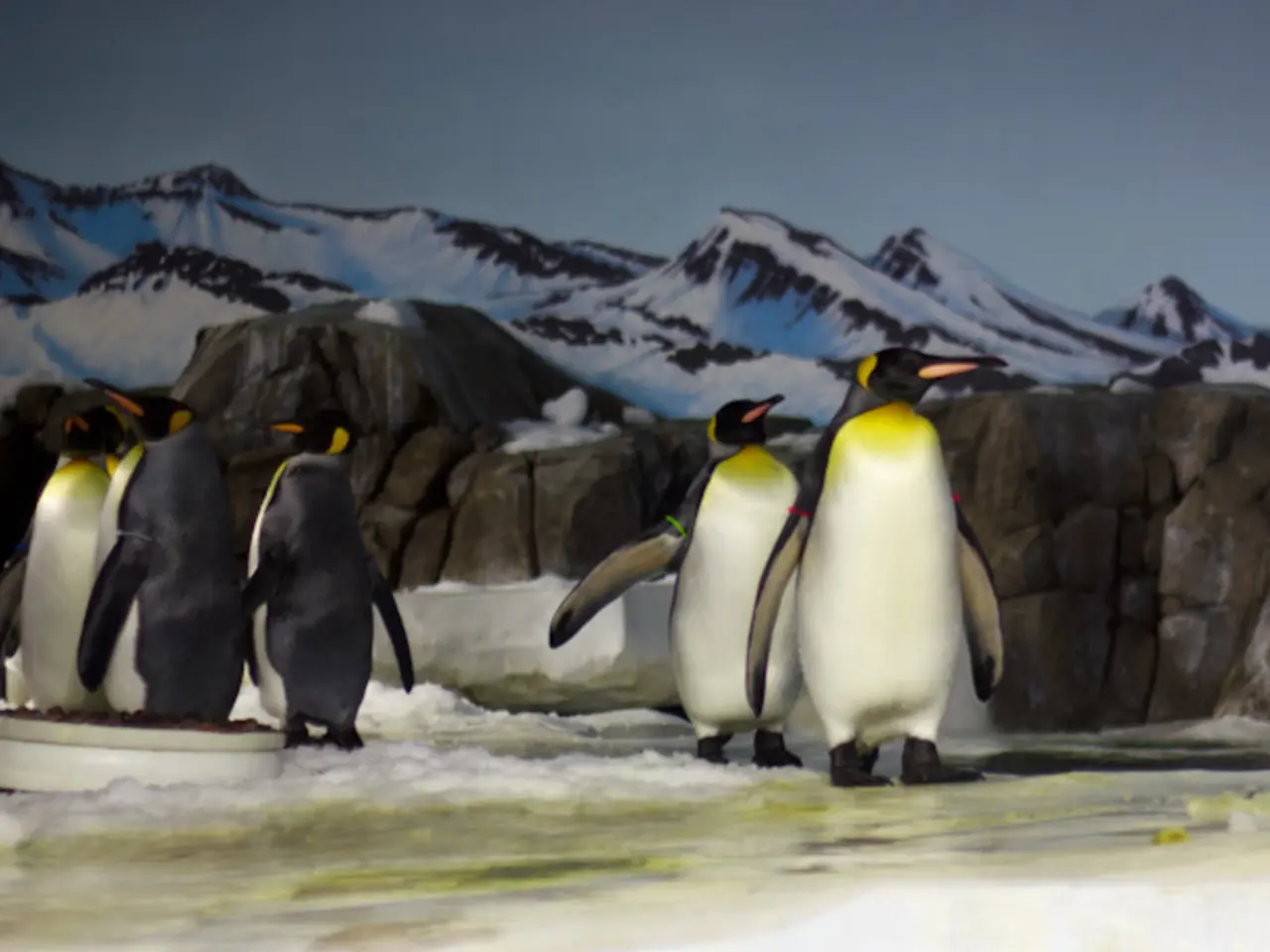Catastrophic Prospects for Greenland's Giant Ice Mass
Melting Greenland Ice Sheet Poses Risks to Vulnerable Communities
A new study published in the journal Nature Climate Change has estimated the minimum sea level rise due to the melting of the Greenland ice sheet. Based on observational data from 2000 to 2019, the melting of the Greenland ice sheet contributes to global sea level rise on the order of several millimeters.
The study's estimate is based on actual observational data of the melting that occurred in Greenland over the past 20 years. However, it is a conservative estimate and does not account for dramatic ice loss events or the melting of Antarctica's ice.
The Greenland ice sheet is known to be melting, with accelerated ice loss linked to rising temperatures. However, some recent data indicates cooling trends in some parts of Greenland during 2000–2019, complicating simple interpretations of melt trends.
The projected ice loss could be closer to 78 centimeters if the last decade is any indicator of our future. Modeling studies focused on specific glaciers within the Greenland Ice Sheet indicate that future contributions to sea level rise can vary significantly depending on climate scenarios and emissions.
The seas are already rising due to the climate crisis, and many beach-side communities are already experiencing the impacts of sea level rise. Many families in impacted communities experience nuisance daytime flooding that occurs when the tides are extremely high once or twice a month. Children in some areas can't walk to their bus stop due to high water levels, and drivers may not be able to gain safe access, leading to missed deliveries.
Communities contributing minimally to global emissions—typically poorer, less industrialized nations often located in low-lying coastal or island regions—stand to suffer disproportionately from sea level rise caused by Greenland ice melting. Sea level rise leads to increased flooding, saltwater intrusion into freshwater resources, displacement of populations, and economic losses with limited local capacity to mitigate or adapt.
Since Greenland's ice melt is driven by global temperature increases largely caused by historic and ongoing emissions from wealthier, industrialized countries, the situation embodies critical issues of climate justice and equity. Brett Branco, who directs the Science and Resilience Institute at Jamaica Bay, works with residents of New York City who live along Jamaica Bay and are learning to live with flooding impacts. Makeshift plank walkways are used to help community members get around during flooding.
The climate crisis is severely affecting our planet's ice, and the more ice melts, the less sunlight will be reflected off the ice. The hotter it becomes, the more ice will melt. The summer of 2021 has broken global heat records, and Hurricane Sandy, which occurred 10 years ago, devastated New York City's coastal communities.
The Inflation Reduction Act, signed into law by President Joe Biden, commits to cutting U.S. greenhouse gas emissions by roughly 40% by 2030. The act is a step towards addressing the climate crisis and reducing the risks posed by sea level rise to vulnerable communities worldwide.
- The study in the Nature Climate Change journal estimates a conservative minimum sea level rise due to the melting Greenland ice sheet, with no account for dramatic ice loss events or Antarctica's melting.
- The newsletter from the environmental-science community may discuss how the accelerated ice loss in Greenland is linked to rising temperatures, with some parts showing cooling trends complicating melt trends.
- The health-and-wellness magazine could feature articles on the impacts of sea level rise on communities, like beach-side families experiencing nuisance daytime flooding and missed deliveries.
- The art community might create pieces that depict climate-change scenarios, such as the melting Greenland ice sheet and the consequences for vulnerable communities.
- The climate-change newsletter could highlight the need for climate justice and equity, underscoring that less industrialized nations, which contribute minimally to emissions, stand to suffer disproportionately from sea level rise caused by Greenland ice melting.




